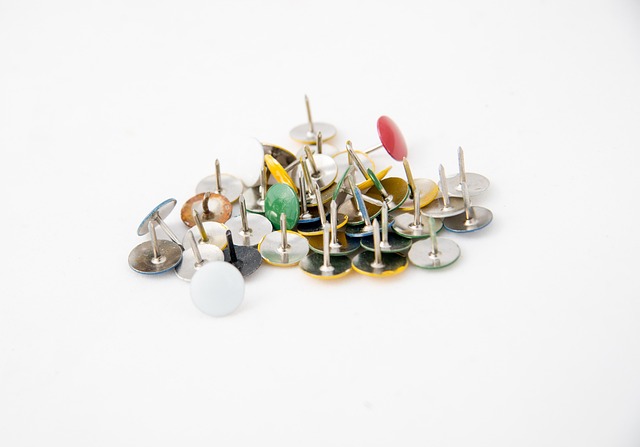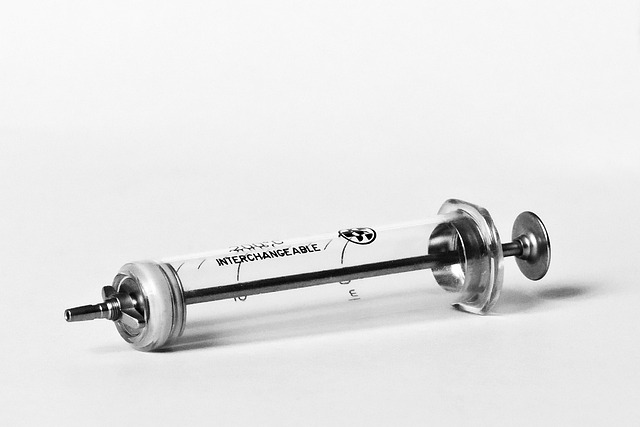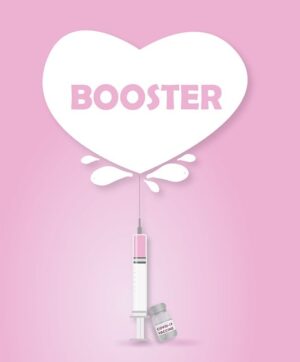Botox injections are a popular, non-surgical cosmetic procedure for smoothing forehead lines and wrinkles. By injecting botulinum toxin into specific muscles, these treatments temporarily paralyze them, reducing the formation of vertical and frown lines. Known for their safety, effectiveness, and minimal downtime, Botox injections offer a discreet way to enhance facial aesthetics, with results lasting 3-6 months. Proper selection of a qualified healthcare provider, realistic expectations, and adherence to post-treatment care are crucial for optimal outcomes.
“Unwind the mysteries of Botox injections for forehead lines—a popular aesthetic treatment gaining traction worldwide. This article serves as your comprehensive guide, delving into the intricacies of this procedure. From understanding the science behind forehead line injections to exploring their myriad benefits, safety considerations, and long-term maintenance, we’ve got you covered. By the end, you’ll be equipped with the knowledge to make an informed decision about enhancing your facial expression.”
What are Forehead Line Injections?

Forehead line injections, also known as Botox injections, are a cosmetic procedure designed to smoothen and reduce the appearance of fine lines and wrinkles on the forehead. This non-surgical treatment involves injecting a small amount of botulinum toxin into specific muscles in the forehead. The toxin temporarily paralyzes these muscles, preventing them from contracting and causing the telltale vertical lines and frown lines that can become more pronounced with age or certain facial expressions.
By relaxing these muscles, Botox injections offer a way to achieve a youthful appearance and enhance overall facial aesthetics. This procedure is popular among individuals seeking to mitigate the effects of aging without undergoing invasive surgery. The treatment is usually quick, painless, and has minimal downtime, making it an attractive option for those looking to improve their facial contouring discreetly and effectively.
How Botox Injections Work for Forehead Lines

Botox injections have become a popular non-surgical solution for reducing and eliminating forehead lines, also known as glabellar lines or frown lines. The procedure involves injecting a small amount of botulinum toxin (Botox) into specific muscles in the forehead. This powerful neurotoxin temporarily paralyzes the muscles, preventing them from contracting and causing the lines to form. By weakening these muscles, Botox injections smooth out the skin’s surface, reducing the appearance of wrinkles and providing a more youthful look.
The effects of Botox are gradual, taking a few days to become fully visible. As the toxin works its magic, patients often notice a significant improvement in the overall texture and tone of their forehead skin. This minimally invasive procedure is considered safe and effective, offering a temporary yet noticeable solution for those seeking to address age-related facial changes.
Benefits of Using Botox for Expression Lines

Botox injections have become a popular non-surgical aesthetic procedure, offering a range of benefits for those seeking to reduce fine lines and wrinkles, particularly on the forehead. One of the key advantages is its ability to relax facial muscles, which over time can cause dynamic expression lines and frowns. By injecting Botox, these muscles are temporarily paralyzed, leading to a significant reduction in the appearance of vertical lines between the eyebrows and horizontal creases across the forehead.
This treatment provides an effective solution for individuals who want to prevent or minimize the formation of expression lines caused by facial expressions. It allows for a more relaxed and youthful-looking face, enhancing overall facial aesthetics. Moreover, Botox offers a non-invasive approach with minimal downtime, making it an appealing option for those seeking a quick and safe way to rejuvenate their appearance.
The Safety and Potential Risks of the Procedure

The safety of forehead line injections, commonly using Botox, is well-documented in controlled clinical settings. When administered by a licensed professional, these procedures are generally considered low risk. However, like any medical intervention, there are potential risks and side effects to be aware of. Temporary redness, swelling, or discomfort at the injection site are common, and these usually subside within a few days. More serious but rare complications include bruising, bleeding, headaches, or an allergic reaction.
One crucial aspect to consider is the selection of a qualified healthcare provider. Using untrained personnel for Botox injections can lead to uneven distribution of the serum, causing botched results or even more severe issues. Always consult with a licensed aesthetician or dermatologist to ensure safety and achieve the desired aesthetic outcome.
Preparing for Your Botox Injection Session

Preparing for your Botox injection session is a crucial step in ensuring optimal results and a comfortable experience. It’s important to have realistic expectations and discuss any concerns with your practitioner. Before your appointment, check that you’re eligible for botox injections – typically, individuals over 18 with specific concern areas are good candidates. Make sure to avoid taking certain medications, like aspirin or ibuprofen, for a week prior as these can increase bleeding risk.
On the day of your treatment, arrive well-rested and hydrated. Avoid intense physical exercise beforehand. Wear comfortable clothing that covers your chest, as you may lie down during the procedure. Our skilled professionals will guide you through each step, answering any questions along the way. They’ll clean the injection sites and use fine needles to inject botox precisely into your forehead muscles.
Post-Treatment Care and Recovery Time

After receiving Botox injections for forehead lines, proper post-treatment care is essential to ensure optimal results and speed up recovery. It’s crucial to avoid strenuous activities or excessive physical exertion for at least 24 hours following the procedure to prevent bleeding or bruising. Cold compresses can help reduce any swelling or discomfort in the treated area. Additionally, keeping the face elevated while resting can aid in minimizing swelling.
The recovery time for Botox injections on forehead lines typically ranges from a few days to a week. During this period, you may experience temporary redness, mild swelling, or pinpoint pain at the injection sites. These side effects usually subside within a short time. It’s important to follow your dermatologist’s aftercare instructions carefully and contact them if you notice any unusual symptoms or prolonged recovery.
Longevity and Maintenance of Results

The longevity of results from forehead line injections, often achieved using Botox, can vary based on several factors, including individual physiology and lifestyle choices. Typically, these treatments can last anywhere from 3 to 6 months, offering a significant period of improved appearance before re-treatment is needed. Maintenance is key; regular top-ups ensure the effects remain consistent and reduce the risk of noticeable regression.
Proper care between injections is also vital. Patients are advised to avoid certain medications and activities that may increase bleeding risks. Additionally, maintaining a healthy lifestyle, including hydration and sun protection, can contribute to preserving the results for longer periods.
Finding a Qualified Dermatologist or Injector

When considering forehead line injections, such as Botox, it’s paramount to find a qualified dermatologist or injector. This is because the procedure requires precision and expertise to achieve natural-looking results and minimize risks. Look for practitioners with extensive experience in aesthetic treatments, preferably specializing in facial rejuvenation. Verifying their certifications and licenses ensures they meet industry standards. Online reviews from previous clients can also provide valuable insights into their skills and patient satisfaction.
Additionally, discussing your expectations openly during a consultation is crucial. A qualified professional will assess your unique needs, face structure, and skin type to recommend the most suitable treatment plan. They’ll explain the procedure in detail, address any concerns, and offer guidance on post-treatment care. This collaborative approach ensures you’re comfortable with the process and helps achieve the desired aesthetic outcomes.
